Plant Prescription: Healing with Houseplants
In today's fast-paced world, it's easy to feel overwhelmed and disconnected from nature. However, there’s a simple remedy that many people overlook: houseplants. These green companions not only beautify our spaces but also offer remarkable therapeutic benefits. Imagine walking into your living room and being greeted by vibrant foliage and colorful blooms. It’s like a breath of fresh air, right? Houseplants can enhance our mental well-being, improve air quality, and foster a deep connection with the natural world around us. So, let’s dive into the incredible ways these plants can heal our minds and bodies.
Understanding the scientific principles behind plant therapy can illuminate how plants positively impact our mental and emotional health. Research in environmental psychology shows that interacting with plants can reduce stress levels and promote feelings of happiness. For instance, studies have shown that simply being around greenery can lower cortisol levels, the hormone associated with stress. It’s fascinating to think about how a little chlorophyll can have such a profound effect on our mood and overall well-being!
When it comes to selecting houseplants, it’s essential to choose ones that suit your environment and lifestyle. Not all plants thrive in every setting, so understanding your space is crucial. For example, if you live in a small apartment with limited sunlight, you might want to consider low-light plants that can flourish in darker spaces. On the other hand, if you have a bright, sunny living room, you can opt for a variety of vibrant plants that love the sun. Here’s a quick overview of some popular houseplants based on their light requirements:
| Plant Name | Light Requirement | Care Level |
|---|---|---|
| Snake Plant | Low to Bright Indirect Light | Low |
| Pothos | Low to Bright Indirect Light | Easy |
| Spider Plant | Indirect Light | Easy |
| Peace Lily | Low to Bright Indirect Light | Moderate |
Not all homes have abundant sunlight. Thankfully, there are several houseplants that thrive in low-light conditions. For instance, the Snake Plant is a champion in this category. With its tall, striking leaves, it adds a touch of elegance to any room without demanding much light. Another fantastic option is the Pothos, which can trail beautifully from shelves or hang in baskets. These plants not only survive but can actually thrive in darker environments, making them perfect for those cozy corners of your home.
Certain houseplants are known for their air-purifying qualities. Plants like the Peace Lily and Spider Plant are not only visually appealing but also work hard to improve your indoor air quality. They filter out harmful toxins and release oxygen, creating a healthier living space. Imagine enjoying a cup of tea in a room filled with these green allies, breathing in fresher air while your stress melts away. It's like having your own personal air purifier that also adds life to your decor!
Transforming your home into a healing sanctuary involves more than just adding a few plants here and there; it’s about strategic placement. Consider arranging plants in spaces where you spend the most time, like your living room or home office. Grouping plants together can create a mini-ecosystem that enhances tranquility. For example, placing a tall plant in a corner can draw the eye and create a focal point, while smaller plants on a coffee table can invite interaction. The key is to create a sense of harmony that promotes relaxation and peace.
Proper care is vital for maintaining healthy houseplants. Here are some essential tips for ensuring your plants thrive:
- Watering: Always check the soil moisture before watering. Overwatering can lead to root rot, while underwatering can stress your plants.
- Fertilizing: Use a balanced fertilizer during the growing season to provide essential nutrients.
- Repotting: As plants grow, they may need larger pots to accommodate their roots. Repotting every couple of years can help them flourish.
Incorporating plants into your interior design can elevate aesthetics and create a cohesive look. Think about the colors and textures of your plants and how they can complement your existing decor. For instance, a vibrant green fern can add a pop of color to a neutral-toned room, while a sleek, modern succulent can enhance a contemporary space. The possibilities are endless, and with a little creativity, you can design a living area that feels both inviting and rejuvenating.
Houseplants can significantly improve mental health. Engaging with plants can provide a sense of purpose and accomplishment, especially when you see them thrive under your care. The act of nurturing a plant can be incredibly rewarding, helping to reduce feelings of anxiety and depression. It’s like having a little friend that grows alongside you, offering companionship and joy. Plus, the routine of caring for plants can create a calming ritual in your day-to-day life.
Engaging in plant care can be a form of mindfulness practice. Tending to your plants can ground you in the present moment, allowing you to escape the hustle and bustle of daily life. Whether it’s watering, pruning, or simply observing their growth, these activities can help you cultivate a deeper connection with your surroundings. It’s a gentle reminder to slow down and appreciate the beauty of nature, even in the confines of your home.
Building a community around plant sharing can enhance social connections. In today’s digital age, there are countless online groups dedicated to plant enthusiasts where you can swap cuttings, share tips, and connect with others who share your passion. This sense of community fosters belonging and can lead to lasting friendships, all while enriching your plant collection. So, why not reach out to fellow plant lovers and start sharing your green treasures?
Q: How do I know if my plant is getting enough light?
A: Observe your plant's growth. If it's stretching towards the light or its leaves are turning yellow, it may need more light. Conversely, if the leaves are scorched, it may be getting too much direct sunlight.
Q: Can houseplants really improve air quality?
A: Yes! Many houseplants can filter toxins from the air and release oxygen, contributing to a healthier indoor environment.
Q: How often should I water my houseplants?
A: This varies by plant type and environmental conditions. Always check the soil moisture before watering to avoid over or under-watering.
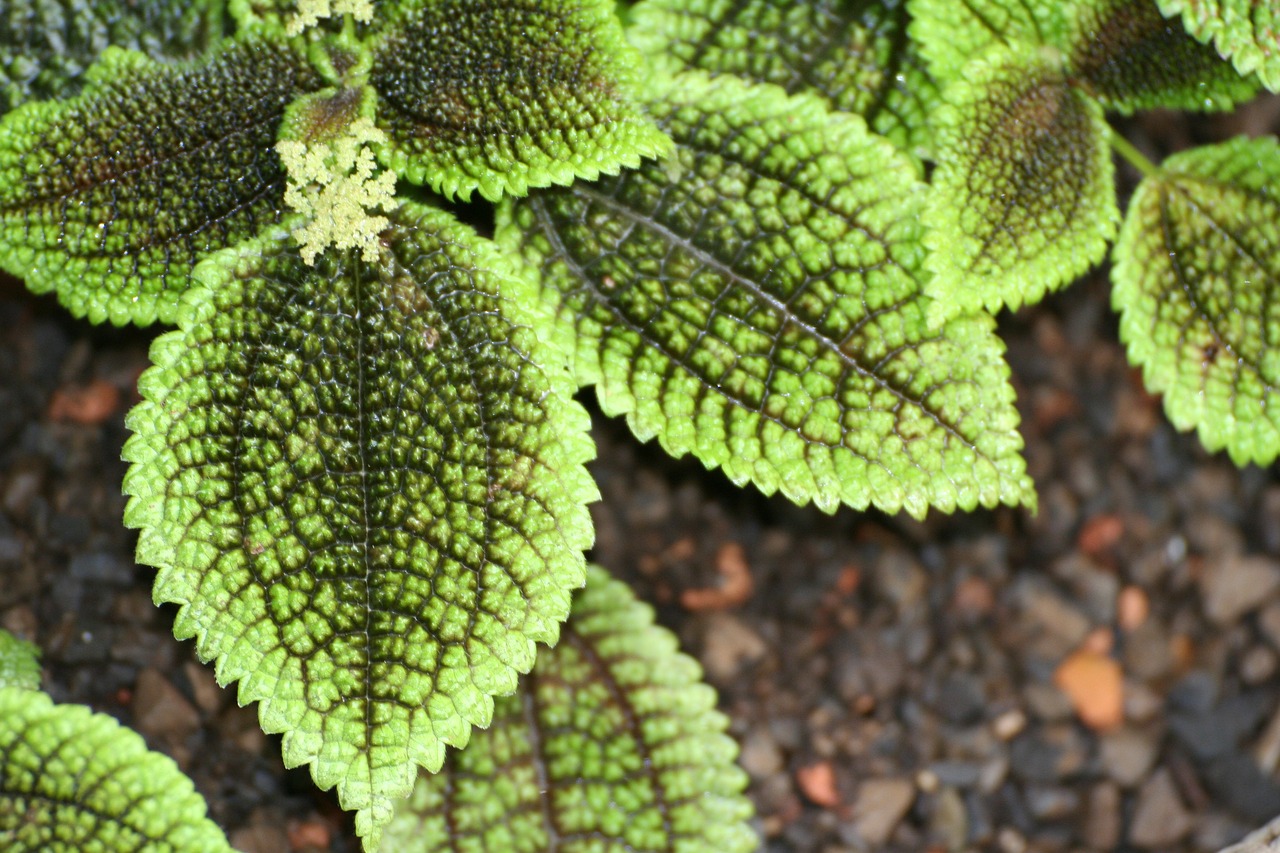
The Science of Plant Therapy
Have you ever walked into a room filled with plants and instantly felt a wave of calm wash over you? It’s not just your imagination; there’s real science behind the soothing effects of houseplants. Research in environmental psychology reveals that being around greenery can significantly enhance our mental and emotional well-being. Studies have shown that plants can reduce stress levels, improve mood, and even boost productivity. But how does this happen? Let's dive into the fascinating world of plant therapy.
One of the key principles of plant therapy is the concept of biophilia, which suggests that humans have an innate connection to nature. This connection can manifest in various ways, from the simple joy of tending to a plant to the profound sense of peace that comes from being surrounded by greenery. Studies indicate that when we interact with plants, our body releases endorphins, the hormones responsible for feelings of happiness and relaxation. This natural response can create a sense of well-being that is hard to replicate through other means.
Moreover, the presence of plants can improve indoor air quality, which is crucial for our health. According to a study conducted by NASA, certain houseplants can effectively filter out harmful toxins from the air, such as formaldehyde and benzene. This means that not only do plants beautify our spaces, but they also create a healthier environment to live and work in. Here’s a quick look at some remarkable air-purifying plants:
| Plant Name | Air-Purifying Qualities |
|---|---|
| Spider Plant | Removes formaldehyde and xylene |
| Peace Lily | Filters out ammonia, benzene, and formaldehyde |
| Snake Plant | Converts CO2 into oxygen at night |
| Boston Fern | Removes formaldehyde and other toxins |
But the benefits of plant therapy extend beyond just physical health. Engaging with plants can also serve as a form of mindfulness practice. When we water, prune, or simply admire our plants, we are often drawn into the present moment. This kind of engagement can help us disconnect from the stresses of daily life and foster a deeper connection with our surroundings. It's akin to taking a mini-vacation right in your living room!
In addition to individual benefits, plants can also help strengthen our social connections. Think about it: how many times have you bonded with someone over a shared love for a particular plant or gardening technique? Building a community around plant sharing can create a sense of belonging and camaraderie that enriches our lives. Whether it’s swapping cuttings with friends or participating in local plant swaps, these interactions can lead to lasting friendships and support networks.
In summary, the science of plant therapy illustrates that houseplants are more than just decorative items; they are powerful allies in our quest for mental and emotional health. By understanding the principles behind plant therapy, we can harness their benefits to create a more tranquil and harmonious living space. So, why not bring a little green into your life and experience the magic of plant therapy for yourself?
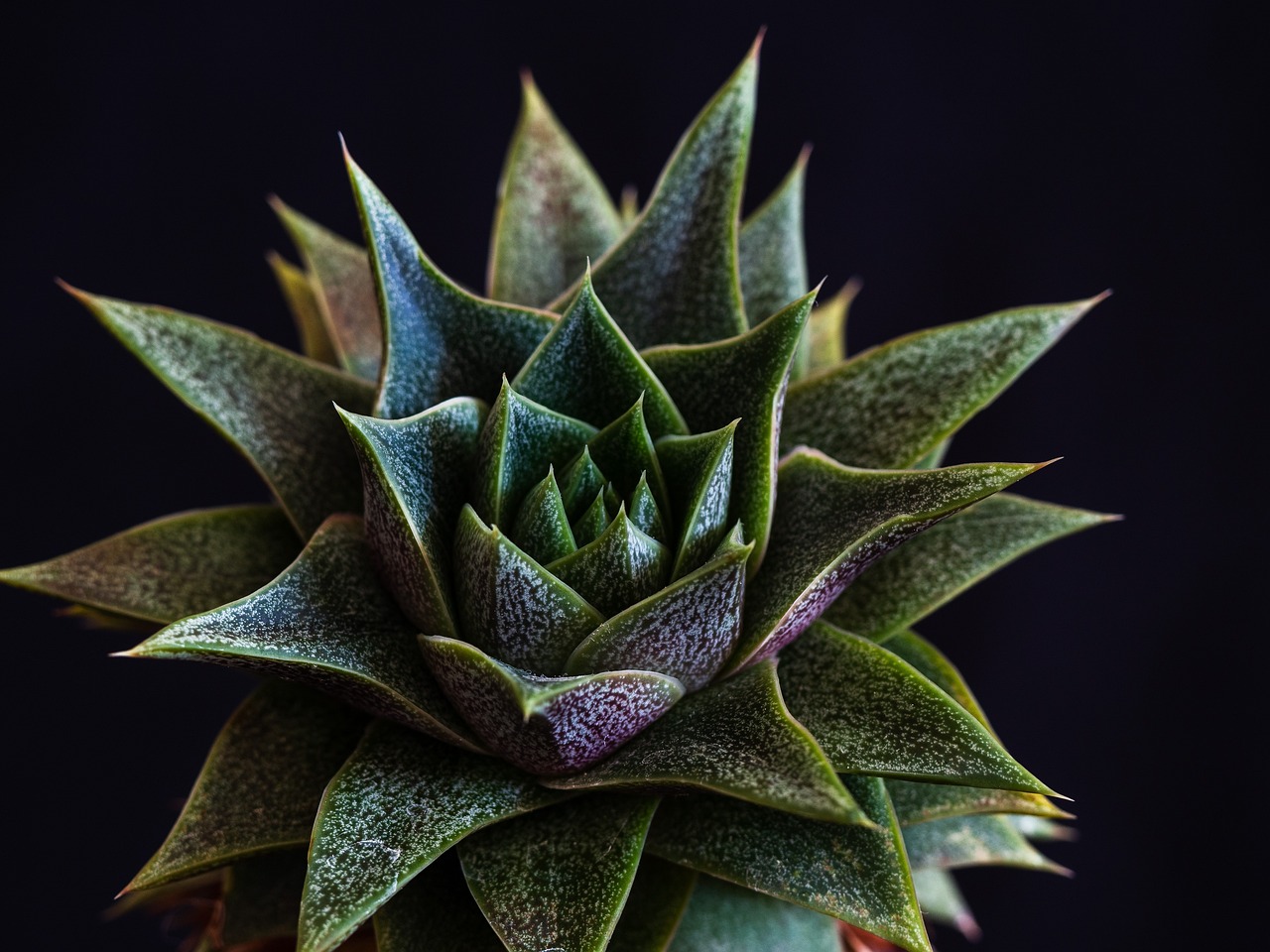
Choosing the Right Houseplants
Choosing the right houseplants can feel a bit like dating—there's a lot to consider! You want to find that perfect match that not only fits your lifestyle but also brings joy and tranquility into your space. First and foremost, think about your environment. Do you live in a sunny apartment with large windows, or are you tucked away in a cozy, dimly lit basement? Understanding your space is crucial because different plants have different light requirements. For instance, succulents and cacti thrive in bright light, while ferns and snake plants can flourish in lower light conditions.
Next, consider your lifestyle. Are you a busy bee who barely has time to water a plant once a week, or do you relish the idea of nurturing your green friends daily? If you find yourself often forgetting to water plants, opt for low-maintenance varieties like pothos or ZZ plants. These resilient houseplants can withstand neglect and still look fabulous! On the other hand, if you enjoy spending time caring for plants, you might want to explore more demanding species that require regular attention.
Another essential factor is the size of your living space. A small apartment might not be the best fit for a towering fiddle leaf fig, while smaller plants like peace lilies or spider plants can add a touch of greenery without overwhelming the room. You can even create a stunning vertical garden if floor space is limited. This allows you to maximize your plant collection while keeping your home stylish and uncluttered.
When selecting houseplants, it's also important to consider their air-purifying abilities. Some plants, like the Boston fern and the rubber plant, are known for their ability to filter out toxins and improve indoor air quality. If you're looking to enhance your health while beautifying your home, these plants are excellent choices. To help you visualize your options, here’s a quick comparison of some popular houseplants and their characteristics:
| Plant Name | Light Requirement | Watering Frequency | Air-Purifying Qualities |
|---|---|---|---|
| Pothos | Low to bright indirect light | Every 1-2 weeks | Yes |
| Snake Plant | Low to bright indirect light | Every 2-6 weeks | Yes |
| Peace Lily | Low to bright indirect light | Weekly | Yes |
| Spider Plant | Low to bright indirect light | Every 1-2 weeks | Yes |
| Fiddle Leaf Fig | Bright indirect light | Weekly | No |
Lastly, don’t forget to embrace your personal style! The aesthetic appeal of houseplants can be just as important as their practicality. Whether you prefer the clean lines of a modern pot or the rustic charm of a terracotta planter, your choice of containers can significantly enhance your interior decor. Mix and match different plant types and pots to create a vibrant and inviting atmosphere that reflects your personality.
In conclusion, choosing the right houseplants involves a blend of understanding your environment, lifestyle, and personal taste. So, take your time, do your research, and enjoy the process of finding the perfect green companions for your home!
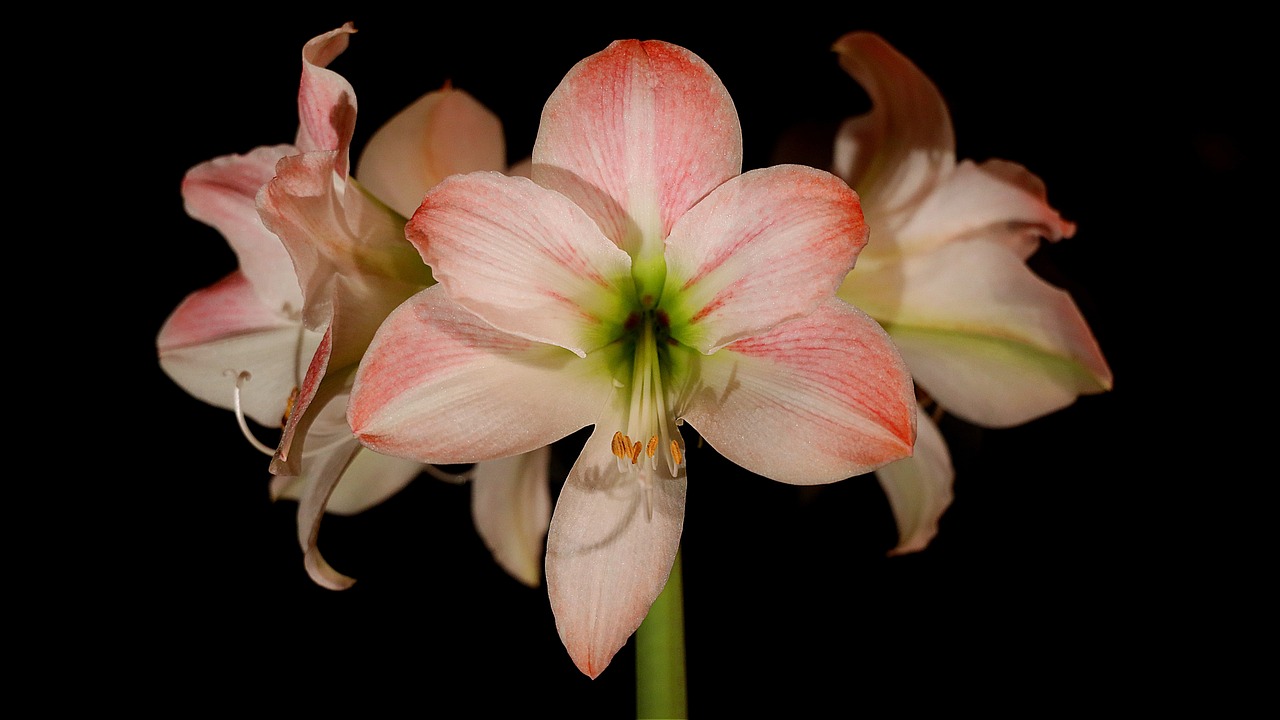
Low-Light Plants for Dark Spaces
Living in a cozy apartment or a home with limited sunlight can make it feel like a challenge to bring the beauty of nature indoors. But fear not! There are low-light plants that not only survive but thrive in darker spaces. These resilient green companions are perfect for those shadowy corners that often get neglected. Imagine transforming a dimly lit room into a vibrant oasis of greenery, where each plant contributes to a calming atmosphere and enhances your overall well-being.
One of the best things about low-light plants is their adaptability. They have evolved to survive in the undergrowth of forests, which means they can handle shade like champs. For instance, the Snake Plant (Sansevieria) is a superstar in the low-light category. Its striking upright leaves add a modern touch to any space while purifying the air. Another excellent choice is the Pothos (Epipremnum aureum), known for its trailing vines and heart-shaped leaves. This plant not only does well in low light but also thrives on neglect, making it perfect for busy individuals.
Here’s a quick rundown of some popular low-light plants you might consider:
| Plant Name | Light Requirements | Care Level |
|---|---|---|
| Snake Plant | Low to bright indirect light | Easy |
| Pothos | Low to bright indirect light | Very easy |
| ZZ Plant | Low to bright indirect light | Easy |
| Peace Lily | Low to medium indirect light | Moderate |
| Cast Iron Plant | Low to medium indirect light | Very easy |
When choosing low-light plants, it’s essential to consider your space and lifestyle. For example, if you’re looking for a plant that blooms, the Peace Lily is an excellent option, producing lovely white flowers even in low light. On the other hand, if you want a plant that can withstand occasional neglect, the ZZ Plant is nearly indestructible and can go weeks without water.
Incorporating these plants into your home not only beautifies your space but also provides a sense of tranquility. Imagine curling up with a book in a room adorned with lush greenery, where the air feels fresher, and your mind feels lighter. These plants can act as natural air purifiers, absorbing toxins and releasing oxygen, contributing to a healthier indoor environment.
So, whether you're a seasoned plant parent or just starting your green journey, don’t shy away from embracing the beauty of low-light plants. They can truly be the unsung heroes of your indoor garden, bringing life and a touch of nature into even the dimmest of spaces.
- Can low-light plants survive in complete darkness? Most low-light plants need at least some indirect light to thrive. Complete darkness will not provide the energy they need for photosynthesis.
- How often should I water low-light plants? It's best to check the soil moisture before watering. Generally, low-light plants prefer to dry out a bit between waterings.
- Can I place low-light plants in my bathroom? Absolutely! Many low-light plants thrive in humid environments, making them perfect for bathrooms.
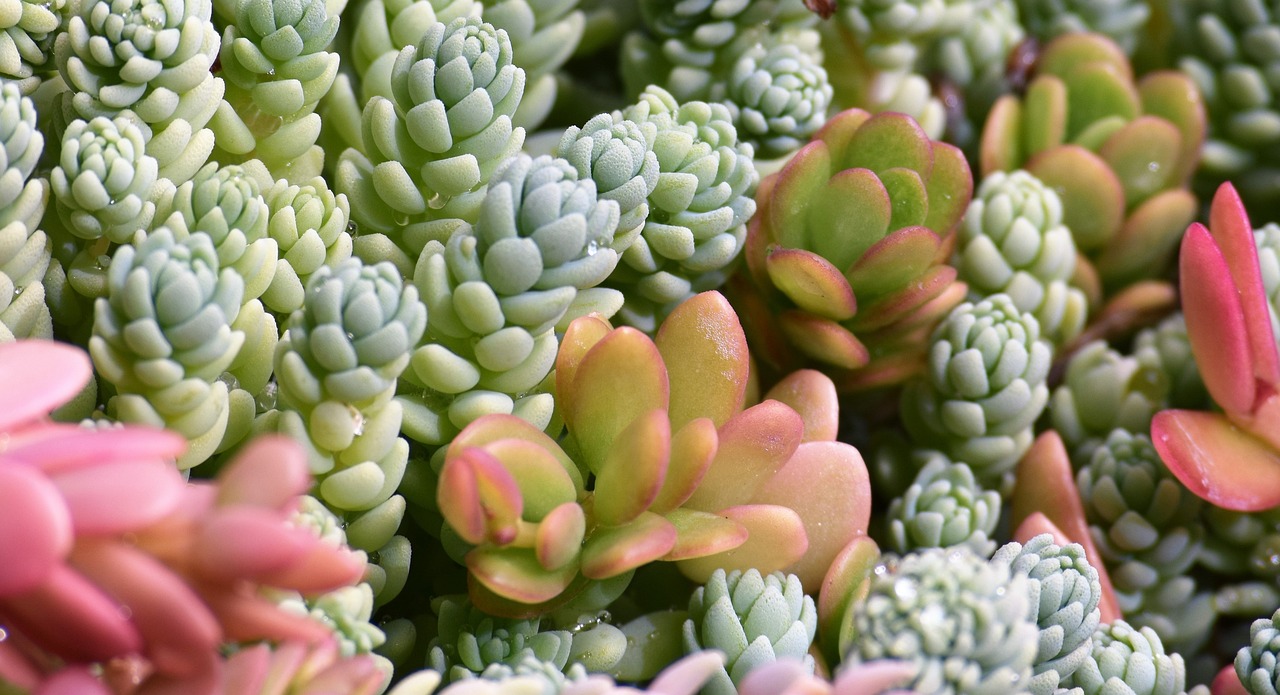
Air-Purifying Plants
When it comes to creating a healthier indoor environment, are the unsung heroes of our homes. These green companions not only beautify our spaces but also work tirelessly to cleanse the air we breathe. Imagine walking into a room filled with vibrant greenery, and as you inhale, you’re not just taking in oxygen but also a breath of fresh, purified air. Isn’t that a delightful thought?
Research has shown that many houseplants can remove harmful toxins from the air, making them essential for improving indoor air quality. For instance, plants such as the Spider Plant, Peace Lily, and Snake Plant have been identified as some of the best options for purifying the air. They can absorb pollutants like formaldehyde, benzene, and xylene, which are commonly found in household products and furnishings. This not only helps in reducing the risk of respiratory issues but also contributes to a more serene and calming atmosphere in your home.
So, how do these plants actually purify the air? They engage in a process known as photosynthesis, where they absorb carbon dioxide and release oxygen. Moreover, their leaves can trap dust and other particles, which helps in keeping the air cleaner. It’s like having a mini air filter that also adds a touch of nature’s beauty to your living space!
| Plant Name | Toxin Removal | Care Level |
|---|---|---|
| Spider Plant | Formaldehyde, Xylene | Easy |
| Peace Lily | Ammonia, Benzene | Moderate |
| Snake Plant | Formaldehyde, Nitrogen Oxides | Very Easy |
| Boston Fern | Formaldehyde, Xylene | Moderate |
In addition to their air-purifying qualities, these plants can also boost your mood and enhance your mental well-being. Studies have indicated that being around greenery can reduce stress levels and promote a sense of calm. Just think about it: nurturing a plant and watching it thrive can be incredibly rewarding. It’s a reminder of the beauty of life and the importance of caring for our environment.
Whether you're a seasoned plant parent or a beginner, incorporating air-purifying plants into your home is a fantastic way to improve your living conditions. They not only enhance the aesthetic appeal of your space but also contribute to a healthier lifestyle. So, why not bring a little green into your life? Start small, perhaps with a Snake Plant on your desk or a Peace Lily in your living room, and watch how they transform your space into a sanctuary of freshness!
- What are air-purifying plants? Air-purifying plants are houseplants that can filter out toxins from the air, improving indoor air quality.
- How do I care for air-purifying plants? Most air-purifying plants require minimal care. It's essential to provide them with the right amount of light, water, and occasional fertilization.
- Can air-purifying plants help with allergies? Yes! By reducing airborne toxins and dust, these plants can help alleviate allergy symptoms and improve overall air quality.
- How many air-purifying plants do I need for my home? It depends on the size of your space. Generally, having one plant per 100 square feet can significantly enhance air quality.

Creating a Healing Space
Transforming your home into a healing sanctuary is not just about adding a few plants; it’s about creating an atmosphere that nurtures your soul. Imagine walking into a room filled with lush greenery, the air fragrant with the essence of nature, and the soft rustle of leaves whispering tranquility. This is the kind of space that invites peace and rejuvenation. To achieve this, you need to consider the placement, type, and arrangement of your houseplants.
First, think about the lighting in your home. Different plants thrive under different lighting conditions. For instance, if you have a sunny corner, consider placing vibrant flowering plants like peace lilies or geraniums. On the other hand, if your space is more shaded, opt for resilient low-light plants such as snake plants or ZZ plants. The right lighting not only keeps your plants healthy but also enhances the overall ambiance of your healing space.
Next, consider the arrangement of your plants. Grouping plants together can create a lush, jungle-like effect that is visually appealing and calming. You can use varying heights and textures to add depth and interest. For example, place taller plants like fiddle leaf figs behind shorter ones like pothos to create layers. Don't forget about using plant stands or hanging planters to utilize vertical space effectively. This not only saves room but also draws the eye upward, making the area feel more expansive.
In addition to aesthetics, think about how the plants can enhance your emotional well-being. Create a specific corner dedicated to relaxation—perhaps a cozy chair surrounded by your favorite plants. This can serve as a personal retreat where you can unwind with a book or practice meditation. The presence of greenery can reduce stress and promote a sense of calm, making it an ideal spot for mindfulness activities.
Moreover, consider the colors of the pots and plant accessories. Earthy tones can promote a sense of grounding, while brighter colors can energize a space. Choose pots that complement your decor and reflect your personal style. Just like a painter selects the right colors for their canvas, you should curate your plant space to reflect a harmonious blend of nature and design.
Lastly, remember that your healing space is a reflection of you. It should evolve as your preferences change. Regularly rotate your plants or introduce new ones to keep the environment fresh and inspiring. Your healing sanctuary should feel dynamic, much like the natural world outside your window.
- How many plants should I have in my healing space? It depends on the size of your space. A few well-placed plants can be more impactful than overcrowding a room.
- What types of plants are best for beginners? Some easy-to-care-for options include spider plants, pothos, and snake plants.
- Can plants really improve my mood? Yes! Studies show that being around plants can reduce stress and improve overall well-being.
- How can I maintain my plants in a healing space? Regular watering, appropriate lighting, and occasional fertilizing will keep your plants thriving.
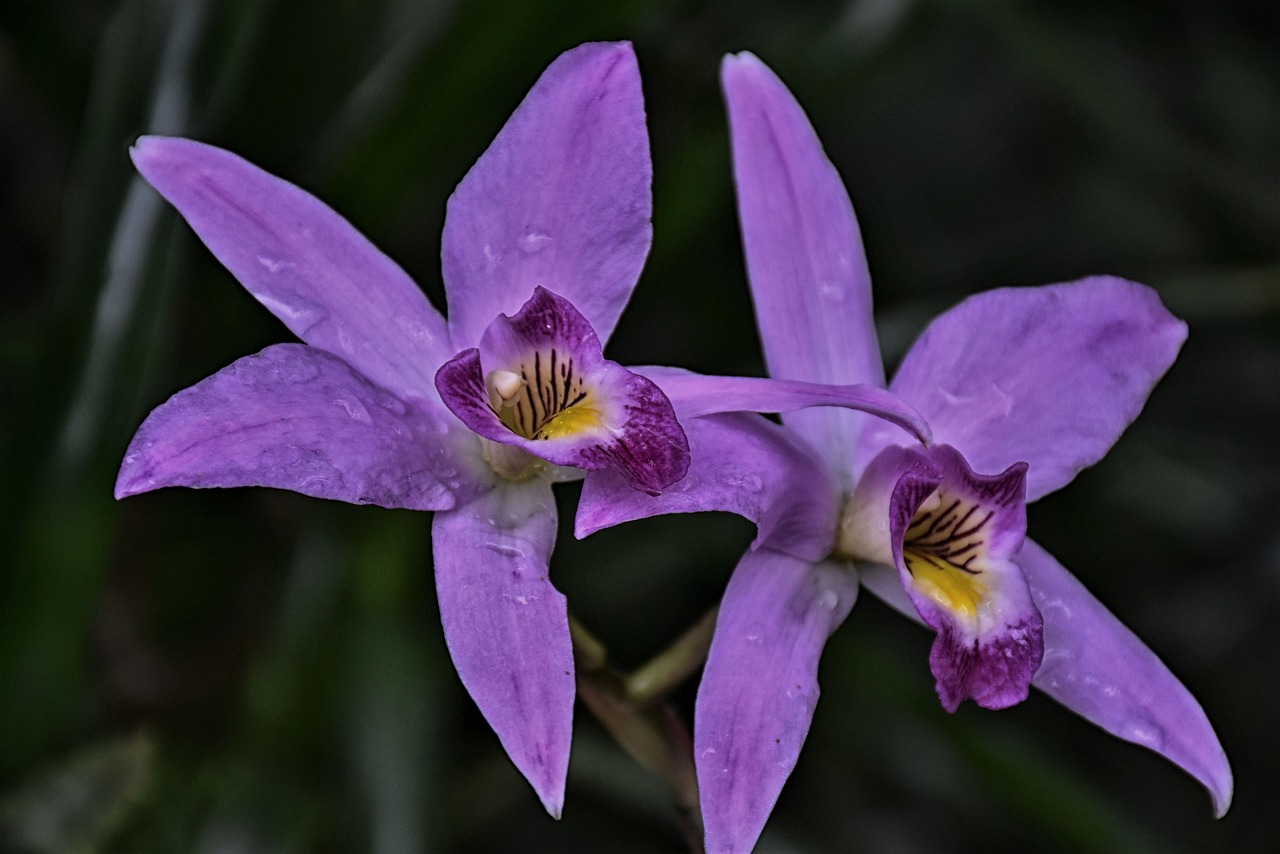
Plant Care Essentials
Caring for houseplants is not just a chore; it’s an art form that can significantly impact both your plants' health and your own well-being. Just like a chef needs the right ingredients, you need the right knowledge to keep your green friends thriving. Let’s dive into the essentials of plant care, ensuring your leafy companions flourish and bring joy to your space.
First off, watering is a crucial aspect of plant care. Overwatering is one of the most common mistakes new plant parents make. It’s like drowning your best friend instead of giving them a refreshing drink! Each plant has its own watering needs, so it's important to understand how much water your specific plants require. For instance, succulents and cacti prefer dry conditions, while ferns thrive in consistently moist soil. A good rule of thumb is to check the top inch of the soil; if it feels dry, it’s time to water.
Next, let’s talk about light. Just like humans, plants have different preferences when it comes to light exposure. Some plants, like snake plants and pothos, are champions in low-light conditions, while others, such as succulents, bask in bright sunlight. Position your plants according to their light needs, and you’ll notice a significant difference in their growth and vitality. For those tricky spots in your home, consider using grow lights to supplement natural light.
Now, we can’t forget about fertilizing. Think of fertilizer as a multivitamin for your plants. They need nutrients to grow strong and healthy, especially during the growing season, which typically spans from spring to summer. Use a balanced, water-soluble fertilizer every few weeks to give your plants that extra boost. However, be cautious not to over-fertilize, as this can lead to nutrient burn, which is like giving your plant too much candy!
Repotting is another essential aspect of plant care that often gets overlooked. As your plants grow, they may outgrow their pots, leading to root-bound conditions that stunt their growth. It’s like trying to fit into your favorite pair of jeans after a big meal! To repot, choose a pot that is 1-2 inches larger in diameter than the current one, and use fresh potting soil to provide a nutrient-rich environment. Aim to repot every 1-2 years, or when you notice roots coming out of the drainage holes.
Lastly, let’s discuss pest control. Even the healthiest plants can fall victim to pests like aphids, spider mites, and mealybugs. Regularly inspect your plants for any signs of infestation. If you notice unwanted guests, you can often remove them by wiping the leaves with a damp cloth or using a gentle insecticidal soap. Prevention is key, so keep your plants healthy and stress-free to minimize the risk of pests.
In summary, caring for houseplants involves a combination of proper watering, light management, fertilizing, repotting, and pest control. By paying attention to these essentials, you’ll not only ensure that your plants thrive but also create a serene and rejuvenating atmosphere in your home. Remember, a healthy plant is a happy plant, and a happy plant contributes to your overall well-being!
Q: How often should I water my houseplants?
A: It depends on the plant type, but a good rule is to check the top inch of soil. If it's dry, it's time to water!
Q: Can I use regular garden soil for my houseplants?
A: It's best to use potting soil specifically designed for indoor plants, as it provides better drainage and nutrients.
Q: How do I know if my plant needs repotting?
A: If you notice roots growing out of the drainage holes or if the plant seems to be growing slowly, it might be time to repot.
Q: What should I do if my plant has pests?
A: Inspect the plant regularly and remove pests manually or use insecticidal soap for treatment.
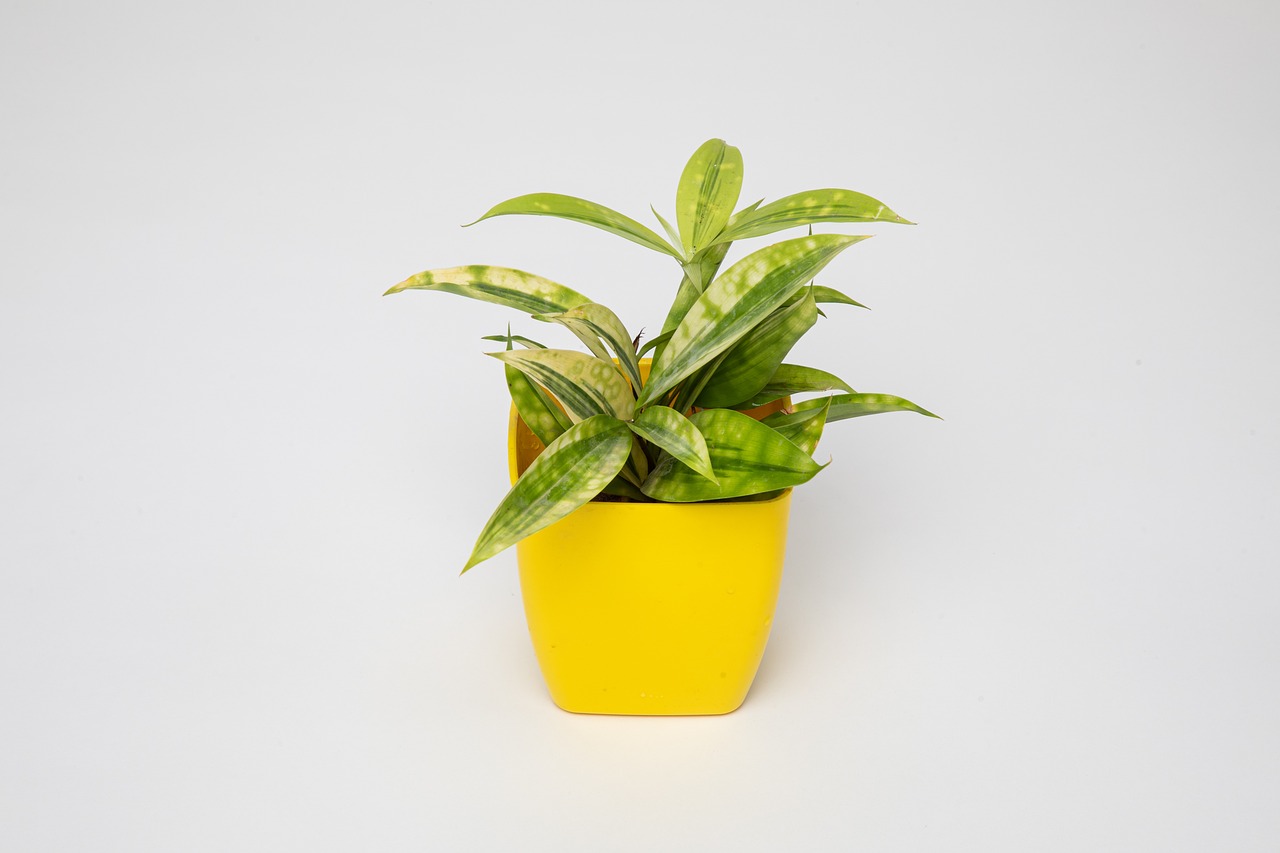
Designing with Plants
When it comes to interior design, incorporating plants is like adding a splash of color to a blank canvas. Not only do they bring life and vibrancy into your home, but they also create a sense of harmony and balance. Imagine walking into a room filled with lush greenery; it’s like stepping into a serene oasis. But how do you achieve that perfect blend of plants and decor? Let's dive into some creative ideas that will help you harmonize plants with your existing style.
First and foremost, consider the size and scale of your plants in relation to your space. Large plants, like fiddle leaf figs or rubber trees, can serve as stunning focal points in a room, while smaller plants, such as succulents or pothos, can be used to accentuate shelves or side tables. It’s all about balance. You wouldn’t want a tiny plant lost in a vast room, just as you wouldn’t want a giant plant overwhelming a small space. Think of it as a dance; every piece needs to work together to create a beautiful performance.
Next, think about the placement of your plants. For instance, placing a tall plant in a corner can draw the eye upward and create an illusion of height, making the room feel more spacious. On the other hand, clustering smaller plants on a coffee table or window sill can create a cozy, inviting atmosphere. Here are a few tips for placement:
- Near Natural Light: Position plants that thrive in sunlight near windows, while low-light plants can be placed in darker corners.
- Layering: Use different heights to create depth. Tall plants can stand next to shorter ones to add dimension.
- Grouping: Grouping plants in odd numbers often looks more visually appealing. Try three or five plants together for a natural look.
Don’t forget about the containers you choose for your plants. The pot can either enhance or detract from the overall design. Consider materials and colors that complement your decor. For a modern aesthetic, sleek ceramic pots in neutral tones work wonders, while rustic wooden containers can add warmth and charm to a farmhouse-style home. The right pot can be the jewelry that completes your plant's outfit!
Moreover, plants can also serve functional purposes in your design. For example, strategically placed plants can act as natural dividers, helping to define spaces in open-concept layouts. This can create a sense of intimacy without the need for physical walls. Additionally, hanging plants can add a unique touch, drawing the eye upwards and creating visual interest. Think of them as nature’s chandeliers, adding elegance and a touch of whimsy.
Lastly, consider the theme of your home when incorporating plants. Are you going for a bohemian vibe with lots of textures and colors? Then vibrant, eclectic plants like the African Violet or Calathea might be your best bet. If your style is more minimalist, opt for simple, clean-lined plants like snake plants or ZZ plants. Remember, your plants should reflect your personal style and enhance the overall aesthetic of your home.
In conclusion, designing with plants is not just about filling space; it's about creating an atmosphere that resonates with your personality and lifestyle. With a little thought and creativity, you can transform your living space into a lush, inviting sanctuary that nourishes both your home and your soul.
Q: How often should I water my houseplants?
A: It depends on the type of plant and the environment. Typically, you should water when the top inch of soil feels dry. Always check the specific needs of your plants.
Q: Can I place plants in my bedroom?
A: Absolutely! Many plants can improve air quality and create a calming atmosphere. Just ensure they don’t require excessive light if your bedroom is dark.
Q: What are the best plants for beginners?
A: Some great beginner-friendly plants include pothos, snake plants, and peace lilies. They are low-maintenance and resilient.
Q: How can I make my plants thrive?
A: Ensure they have the right amount of light, water, and nutrients. Regularly check for pests and repot as needed to give them room to grow.

The Mental Health Benefits of Houseplants
Houseplants are more than just decorative items; they are powerful allies in our quest for mental well-being. Imagine walking into a room filled with greenery—the vibrant hues of leaves, the earthy scent of soil, and the gentle rustle of foliage. It’s like a breath of fresh air for your mind! Studies have shown that having plants around can significantly reduce feelings of stress and anxiety, making our homes feel like safe havens.
One of the most fascinating aspects of houseplants is their ability to improve our mood. Just think about it: when you nurture a plant, you are engaging in a form of self-care. The simple act of watering, pruning, or even just observing your plants can bring a sense of purpose and accomplishment. This nurturing behavior can trigger the release of dopamine, often referred to as the "feel-good" hormone. It’s like giving yourself a little mental hug every time you tend to your green companions!
Moreover, houseplants have been linked to increased productivity and creativity. Have you ever noticed how a little greenery can transform a dull workspace into a vibrant hub of inspiration? Research in environmental psychology suggests that the presence of plants can enhance cognitive function, making it easier for us to focus and think creatively. It’s as if plants whisper encouragement to us, urging our minds to wander and explore new ideas.
Additionally, the act of caring for plants can serve as a form of mindfulness practice. In our fast-paced lives, we often forget to slow down and appreciate the little things. Tending to a plant requires us to be present, to observe its growth, and to respond to its needs. This connection to nature can ground us, reminding us to breathe and appreciate the moment. Just as a gentle breeze rustles the leaves, so too can plant care rustle our inner peace.
Let’s not forget the social aspect of houseplants. Sharing plants with friends or participating in plant swaps can foster a sense of community. Imagine connecting with someone over a shared love for succulents or discussing the best care tips for a Monstera. These interactions can create bonds and enhance our sense of belonging, which is crucial for our emotional health.
In summary, the mental health benefits of houseplants are profound. They not only beautify our spaces but also enrich our lives in ways we often overlook. By nurturing plants, we cultivate a sense of purpose, enhance our creativity, and connect with the world around us. So, why not invite a little greenery into your life? Your mind will thank you!
- How do houseplants improve mental health? Houseplants can reduce stress, enhance mood, and promote mindfulness through the act of caring for them.
- What types of plants are best for mental well-being? Plants like peace lilies, snake plants, and pothos are known for their air-purifying qualities and ease of care, making them great choices.
- Can caring for plants really reduce anxiety? Yes! Engaging with plants can create a calming routine that helps alleviate anxiety and promotes relaxation.
- How can I incorporate plants into my home for mental health benefits? Place plants in areas where you spend the most time, such as your living room or workspace, to maximize their positive effects.

Mindfulness and Plant Care
Engaging in plant care can be a profound practice of mindfulness, offering us a unique opportunity to connect with the present moment. Think about it: when you're watering your plants or pruning their leaves, your mind is drawn away from the chaos of daily life and into the simple, rhythmic actions that nourish life. This act of nurturing can transform an ordinary task into a meditative experience. It allows you to focus on the textures of the soil, the vibrant colors of the leaves, and the gentle sounds of nature around you.
Studies have shown that spending time with plants can reduce stress and enhance emotional well-being. When you immerse yourself in the world of plants, you’re not just caring for them; you’re also engaging in a form of self-care. The act of tending to your plants can create a sense of responsibility and purpose, which is often lacking in our fast-paced lives. As you water them, you might find yourself reflecting on your own needs and desires, creating a beautiful loop of care and attention.
Moreover, this practice can be easily integrated into your daily routine. For instance, you might establish a weekly ritual where you spend time with your plants, observing their growth and changes. You could even consider keeping a plant journal where you note down your observations, feelings, and thoughts during these sessions. This not only enhances your mindfulness practice but also helps you develop a deeper connection with your green companions.
Here are a few tips to enhance your mindfulness while caring for plants:
- Slow Down: Take your time when watering or repotting. Feel the soil, observe the plant's condition, and enjoy the process.
- Engage Your Senses: Notice the colors, textures, and scents of your plants. Each sensory detail can ground you in the moment.
- Practice Gratitude: Acknowledge the beauty and life your plants bring into your space. This can foster a sense of appreciation that extends beyond the plant itself.
In essence, caring for plants is not merely about keeping them alive; it’s about cultivating a deeper awareness of ourselves and our environment. As you nurture your plants, you may find that you’re also nurturing your own mental health, creating a sanctuary of peace and tranquility in your home. So the next time you tend to your houseplants, remember that you’re not just engaging in a chore; you’re participating in a mindful practice that can enrich your life in countless ways.
Q: How does caring for plants improve mental health?
A: Caring for plants encourages mindfulness, reduces stress, and instills a sense of purpose, all of which contribute positively to mental health.
Q: Can any plant be used for mindfulness practice?
A: Yes! Any plant that you feel connected to can enhance your mindfulness practice. Choose plants that resonate with you and your living space.
Q: How often should I tend to my plants for the best mindfulness experience?
A: It varies by plant type, but establishing a regular routine—like weekly check-ins—can help you maintain both your plants and your mindfulness practice.
Q: What are some signs that my plant care is beneficial?
A: Healthy growth, vibrant colors, and even the joy you feel while tending to them are great indicators that your plant care is having a positive impact!

Community and Plant Sharing
Have you ever thought about how plants can bring people together? It's fascinating how a simple green leaf or a vibrant flower can serve as a bridge, connecting individuals in ways we often overlook. is not just about exchanging pots; it’s about cultivating relationships, sharing stories, and creating a network of support. Imagine walking into a neighbor's home and being greeted by a thriving jungle of houseplants, each with its own backstory. That’s the beauty of sharing plants—it’s like swapping pieces of our lives.
When we share plants, we’re not just giving away a piece of greenery; we’re also sharing the joy of nurturing and growth. For many, caring for a plant can be a therapeutic escape from the hustle and bustle of daily life. By exchanging plants, we can introduce others to the therapeutic benefits that come with plant care. It’s like passing on a little piece of happiness! Plus, there’s something incredibly rewarding about seeing a plant you gifted flourish in someone else’s home.
In today’s digital age, community plant sharing has taken on new forms. Social media platforms are buzzing with plant enthusiasts showcasing their collections, swapping cuttings, and even organizing local plant swaps. These events can range from casual meet-ups at a local park to organized gatherings at community centers. The thrill of hunting for new plants, sharing tips, and learning from others can be exhilarating. Not only do you get to expand your own plant family, but you also foster a sense of belonging to a community that shares your passion.
Moreover, sharing plants can help build a stronger community. It encourages conversations and connections that might not happen otherwise. Think about it: when you share a plant, you’re also sharing a part of your life, your experiences, and your knowledge. This can lead to deeper relationships and a more supportive environment. As people bond over their love for plants, they create a network where they can share advice, swap stories, and even lend a helping hand when someone’s plant isn’t thriving.
To further illustrate the impact of community plant sharing, consider the following table that highlights some of the benefits:
| Benefit | Description |
|---|---|
| Connection | Fosters relationships and encourages social interaction. |
| Knowledge Sharing | Allows for the exchange of tips and techniques for plant care. |
| Emotional Support | Provides a sense of belonging and community during plant care journeys. |
| Environmental Awareness | Promotes a greater appreciation for nature and sustainability. |
In essence, community and plant sharing is about more than just the plants; it’s about the connections we create and the joy we find in nurturing life together. So, whether you’re a seasoned plant parent or just starting your journey, consider reaching out to your community. You never know what friendships might blossom from a simple exchange of a plant!
- What is plant sharing? Plant sharing is the practice of exchanging plants, cuttings, or knowledge about plant care among friends, neighbors, or community members.
- How can I get involved in plant sharing? You can join local plant swap events, participate in online plant communities, or simply reach out to friends who share your interest in plants.
- What are the benefits of sharing plants? Sharing plants can strengthen community bonds, provide emotional support, and promote knowledge exchange about plant care.
- Can I share any type of plant? Yes, most plants can be shared, but it's best to ensure that the plants are healthy and free from pests before sharing.
Frequently Asked Questions
- What are the mental health benefits of having houseplants?
Houseplants can significantly boost your mental well-being. They help reduce stress and anxiety, promote feelings of calmness, and even improve focus and productivity. Engaging with plants allows you to connect with nature, which can be incredibly grounding and uplifting.
- How do I choose the right houseplants for my home?
Selecting the right houseplants depends on your living conditions and personal preferences. Consider factors like light availability, humidity levels, and your ability to care for the plants. For example, if you have low light, opt for hardy plants like snake plants or pothos. If you're a beginner, start with low-maintenance varieties.
- Can houseplants improve indoor air quality?
Absolutely! Many houseplants are known for their air-purifying qualities. Plants like peace lilies, spider plants, and bamboo palms can help filter out toxins and improve air quality, creating a healthier living environment for you and your family.
- What are some tips for caring for houseplants?
Caring for houseplants involves understanding their specific needs. Make sure to water them appropriately—overwatering is a common mistake! Additionally, provide adequate light, use the right soil, and fertilize during the growing season. Regularly check for pests and repot when necessary to keep your plants thriving.
- How can I create a healing space with plants?
To create a healing space, think about the placement of your plants. Arrange them in areas where you spend the most time, such as your living room or home office. Grouping plants together can also enhance the aesthetic and create a calming atmosphere. Consider using plant stands or hanging planters to maximize space and visual interest.
- What are some low-light houseplants I can choose?
If you have a darker space, fear not! There are plenty of low-light houseplants that thrive in such conditions. Some great options include the ZZ plant, snake plant, and pothos. These plants not only survive but also bring a touch of green to your home, even in low light.
- How can plant care be a form of mindfulness?
Tending to plants can be a wonderful mindfulness practice. It encourages you to slow down and focus on the present moment. The act of watering, pruning, and observing your plants can help clear your mind and reduce stress, making it a therapeutic experience.
- What is plant sharing and how does it build community?
Plant sharing is the practice of exchanging plants or cuttings with others, which can foster social connections. It creates a sense of community as you bond over a shared love for plants. Whether through plant swaps or gifting cuttings, this practice can enhance relationships and create a network of plant enthusiasts.



















